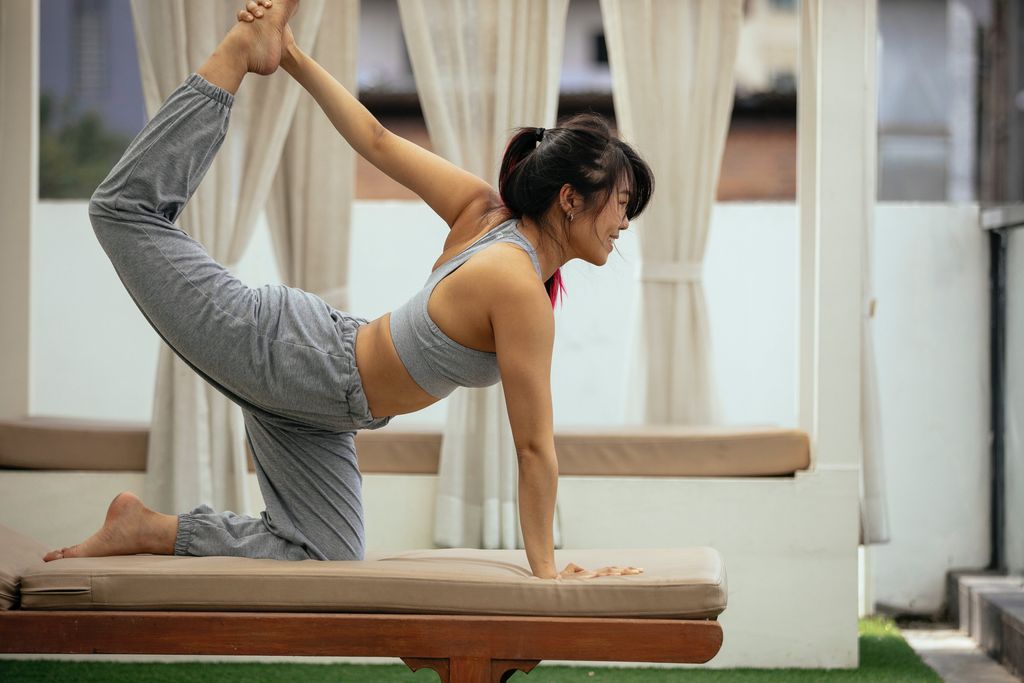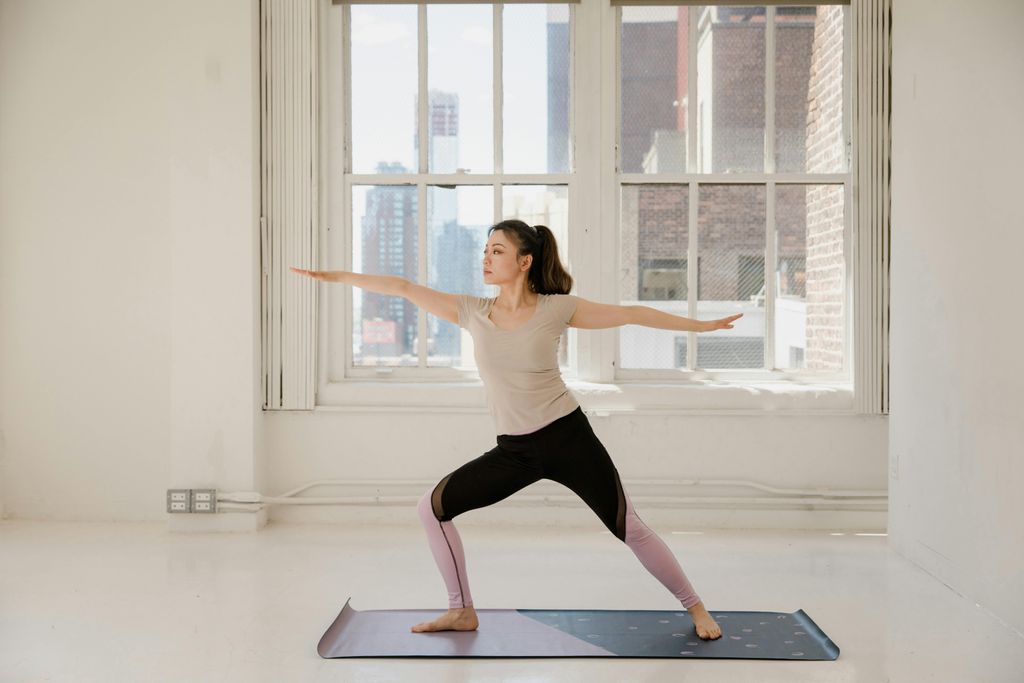
Choosing the Right Thickness for Your Yoga Mat
When it comes to choosing a yoga mat, one important factor to consider is the thickness. The thickness of your mat can greatly affect your comfort and stability during your practice. In this article, we will explore the different factors to consider when choosing the right thickness for your yoga mat, as well as the benefits and drawbacks of standard thickness, thin mats, and thick mats.
Key Takeaways
- Consider the material, durability, grip, and portability when choosing the thickness of your yoga mat.
- Standard thickness mats offer a good balance of comfort and stability.
- Thin mats are lightweight and portable, but may not provide enough cushioning.
- Thick mats provide extra cushioning and support, but can be heavy and less portable.
- Choose a thickness that suits your individual needs and preferences.
Factors to Consider
Material
When choosing a yoga mat, one of the important factors to consider is the material it is made from. The material of the mat can affect its durability, grip, and overall performance. There are various materials used for yoga mats, including natural rubber, PVC, TPE, and cork. Each material has its own unique characteristics and benefits. Here is a table comparing the different materials:
Durability
Durability is a crucial factor to consider when choosing the right thickness for your yoga mat. A durable mat will last longer and withstand the wear and tear of regular use. It is important to look for mats made from high-quality materials that are known for their durability, such as natural rubber or PVC. These materials provide excellent resistance to stretching, tearing, and degradation over time.
When evaluating the durability of a yoga mat, it is also essential to consider the mat's construction. Mats with a dense and tightly woven surface are generally more durable than those with a looser weave. Additionally, mats with reinforced edges and a strong backing layer offer extra durability and prevent fraying or peeling.
To ensure the longevity of your yoga mat, it is recommended to clean and store it properly. Regularly wiping down the mat with a mild soap and water solution and allowing it to air dry can help remove dirt and sweat buildup, preventing the growth of bacteria and extending the mat's lifespan.
Grip
The grip of a yoga mat is an important factor to consider when choosing the right thickness. A mat with good grip will help you maintain stability and prevent slipping during your yoga practice. It is especially important if you practice more dynamic styles of yoga or if you tend to sweat a lot. A mat with a textured surface or a sticky material can provide better grip and enhance your overall yoga experience.
Portability
When it comes to choosing the right thickness for your yoga mat, portability is an important factor to consider. A mat that is too thick can be bulky and difficult to carry, especially if you need to transport it to different locations. On the other hand, a mat that is too thin may not provide enough cushioning and support, making it uncomfortable to use. It's important to find a balance between thickness and portability that suits your needs.
To help you make an informed decision, here are some key points to consider:
- Weight: A thinner mat is generally lighter and easier to carry, making it a good option for those who travel frequently or attend yoga classes outside of their home.
- Foldability: Some mats are designed to be foldable, which can make them more compact and easier to pack in a bag or suitcase.
- Durability: Consider the durability of the mat, as a thinner mat may be more prone to wear and tear over time.
Finding a mat that strikes the right balance between thickness and portability will ensure that you can comfortably practice yoga wherever you go.
Standard Thickness
Benefits
When it comes to standard thickness yoga mats, there are several benefits to consider. These mats provide a good balance between comfort and stability, making them suitable for most yoga practices. They offer enough cushioning to support your joints and provide a stable surface for balancing poses. Additionally, standard thickness mats are widely available and come in a variety of materials and designs to suit different preferences and budgets.
Drawbacks
While standard thickness yoga mats offer many benefits, there are a few drawbacks to consider. One drawback is that they can be bulky and heavy, making them less portable than thinner mats. Additionally, the extra cushioning provided by thicker mats may make it more difficult to maintain balance during certain poses. Finally, standard thickness mats may not provide enough support for individuals with joint issues or those who require extra padding for comfort.
Thin Mats
Advantages
There are several advantages to using a thick yoga mat:
- Extra cushioning: Thick mats provide more cushioning and support, making them ideal for individuals with joint or knee issues.
- Comfort: The added thickness of the mat offers a more comfortable surface for practicing yoga poses.
- Insulation: Thick mats provide better insulation, keeping you warm during floor-based exercises.
However, there are also some disadvantages to consider:
- Portability: Thick mats can be heavier and bulkier, making them less convenient to carry around.
- Stability: The extra thickness may reduce stability, especially for balancing poses that require a firm and stable surface.
- Price: Thick mats tend to be more expensive compared to thinner options.
It's important to weigh these advantages and disadvantages when choosing the right thickness for your yoga mat.
Disadvantages
While thick yoga mats provide more cushioning and support, they can be heavy and bulky to carry around. This can make them less portable and convenient for those who travel frequently or attend yoga classes outside of their home. Additionally, thick mats may not provide as much stability and balance as thinner mats, which can be a disadvantage for certain yoga poses that require a firm and stable foundation.
Thick Mats
Advantages
There are several advantages to using a thick yoga mat:
- Extra cushioning: Thick mats provide more cushioning and support for your joints, making them ideal for people with sensitive knees or wrists.
- Comfort: The extra thickness of the mat adds a layer of comfort, allowing you to enjoy your yoga practice without discomfort.
- Insulation: Thick mats provide better insulation, keeping you warm during floor-based poses.
- Durability: Thick mats are often more durable and long-lasting compared to thinner mats.
However, it's important to consider the drawbacks of thick mats as well. They can be heavier and bulkier, making them less portable. Additionally, some people may find it more challenging to maintain balance on a thick mat.
Disadvantages
While thick yoga mats provide excellent cushioning and support, they also have a few drawbacks to consider. One of the main disadvantages of thick mats is their weight. Due to the extra padding, thick mats can be heavier and bulkier to carry around. This can make them less portable and convenient for travel or commuting to yoga classes. Additionally, thick mats may not provide as much stability and balance as thinner mats. Some yogis prefer a firmer surface for certain poses and transitions, which may be more challenging on a thick mat.
Thick mats are essential for a comfortable and effective yoga practice. At Yune Yoga, we understand the importance of having a supportive surface to enhance your yoga experience. Our thick mats are made from high-quality materials that provide excellent cushioning and stability. Whether you're a beginner or an experienced yogi, our thick mats will help you maintain balance and prevent injuries. Visit our website to explore our wide range of yoga mats and fitness and health accessories. Elevate your yoga practice with Yune Yoga!
Conclusion
In conclusion, choosing the right thickness for your yoga mat is an important decision that can greatly impact your practice. It is essential to consider factors such as comfort, stability, and portability when selecting the thickness that best suits your needs. Whether you prefer a thin mat for better connection with the ground or a thicker mat for extra cushioning, finding the perfect balance is key. Remember to also take into account your body type, the type of yoga you practice, and any specific needs or preferences you may have. By carefully considering these factors, you can ensure that your yoga mat provides the support and comfort you need to enhance your yoga experience.
Frequently Asked Questions
What is the ideal thickness for a yoga mat?
The ideal thickness for a yoga mat depends on personal preference and the type of yoga you practice. Generally, a standard thickness of around 4-5mm is suitable for most practitioners.
Are thin yoga mats less durable?
Thin yoga mats are generally less durable compared to thicker mats. They are more prone to wear and tear, especially if used on rough surfaces or with intense practices.
Do thick yoga mats provide better cushioning?
Yes, thick yoga mats provide better cushioning and support for joints. They are especially beneficial for practitioners with sensitive knees or wrists.
Are thin mats more portable?
Yes, thin yoga mats are more portable and easier to carry compared to thicker mats. They can be rolled up tightly and fit into smaller bags or backpacks.
Can a thick yoga mat affect balance?
Thick yoga mats can slightly affect balance, especially for standing poses that require stability. However, with regular practice, most practitioners can adapt and maintain balance.
Are thick mats suitable for hot yoga?
Thick mats may not be ideal for hot yoga as they can trap heat and make the practice more uncomfortable. It is recommended to use thinner mats that provide better grip and moisture absorption.


